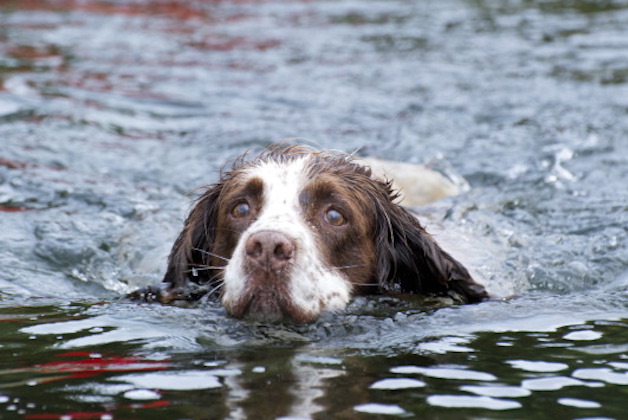Win CENS ProFlex DX5 earplugs worth £1,149 – enter here
Do spaniels smell more than Labradors?
 'Bo' the Springer Spaniel
'Bo' the Springer Spaniel
Q: I would like a springer or working cocker spaniel to train as a gundog, but my father is not keen. My grandparents had a show-strain cocker who was a lovely dog but she was one of those really smelly spaniels, no matter what my grandparents did to try to stop it. Should I get a Labrador instead? Do spaniels smell more than labradors?
A: The simple answer is no. Working cocker spaniels do not smell any worse than any other dog. You can get smelly spaniels, smelly labradors and smelly Jack Russells. (Particularly when they have been swimming or rolling in manure.) The question of why some dogs naturally smell more than others, however, is more complex.
Why dogs smell
- Rather than emitting any one particular smell, dogs emit a variety of natural odours, which combine to form the typical scent that owners will recognise as the smell that their dog leaves on carpets, furniture, on their bedding and in the car. (Read our list of the best gundog beds.)
- Dogs do not sweat like people but they do perspire from their paws, and produce a scent from their hair follicles. This secretion has a chemical scent that is individual to the dog, allowing for individual animal recognition by other dogs. So smelly spaniels smell quite different individually from smelly labradors. These normal body odours can usually be kept to a minimum, but become unpleasant if they develop skin infections or scratch excessively, for example with an allergy or fleas. The smell becomes worse if the dog develops an oily skin.
- Dogs also have sweat glands on their noses. When these glands are active, they leave the nose and paw pads slightly moist and help these specialised skin features maintain their functional properties. The odour associated with dog paw pads is much more noticeable on dogs with moist paw pads than on those with dry pads.
- Dogs also produce oil, an important part of healthy skin and hair, which also has its own scent marker.
- Dogs have apocrine glands in their ears, which produce a light yeasty smell and, if infected, the smell from their ears can become particularly unpleasant. Some dogs, especially those with a lot of hair in their ears and those with long floppy ears, can be more susceptible. It is not uncommon for a vet to sniff a dog’s ears to try to detect any potential bacterial or fungal infection. (Read more on looking after a dog’s ears.)
- Dogs also have anal glands, which produce a secretion with a strong musky odour. These glands normally empty each time the dog passes a firm stool. The scent is particular to each dog as a means they have of identifying each other and explains why dogs tend to sniff each other’s rear end. A large amount may be extruded when a dog is frightened. (Read more about a dog’s anal glands here.)
- Dental problems often associated with excess tartar on the teeth, gum infection and decay are also a source of bad smells. (Read how can I look after my dog’s teeth?)
- Finally, dogs produce intestinal gas as flatulence. Some is normal but if it smells unnatural or is happening all the time, you may want to talk to your vet about what your dog is eating.
This article was originally published in 2016 and is kept updated.
Related Articles
Get the latest news delivered direct to your door
Subscribe to Shooting Times & Country
Discover the ultimate companion for field sports enthusiasts with Shooting Times & Country Magazine, the UK’s leading weekly publication that has been at the forefront of shooting culture since 1882. Subscribers gain access to expert tips, comprehensive gear reviews, seasonal advice and a vibrant community of like-minded shooters.
Save on shop price when you subscribe with weekly issues featuring in-depth articles on gundog training, exclusive member offers and access to the digital back issue library. A Shooting Times & Country subscription is more than a magazine, don’t just read about the countryside; immerse yourself in its most authoritative and engaging publication.







